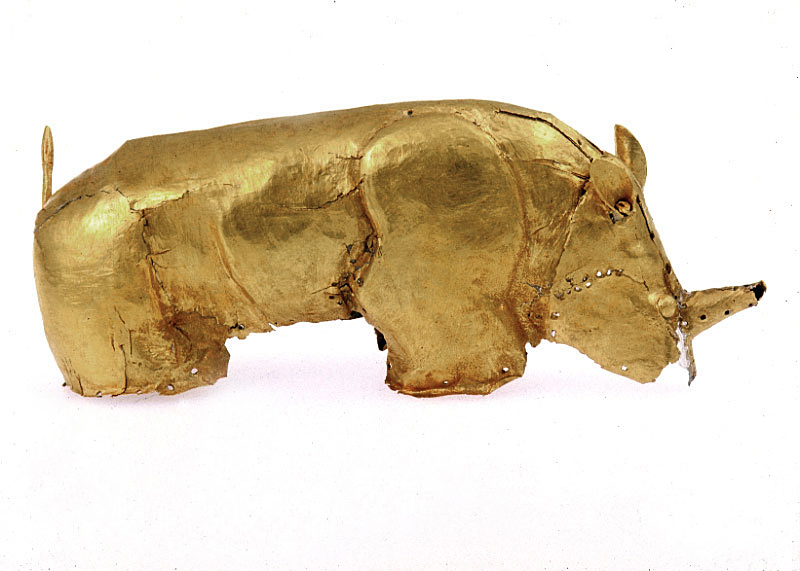Mapungubwe Museum on:
[Wikipedia]
[Google]
[Amazon]
The Mapungubwe Collection, held by the

 The discovery of gold artefacts on Mapungubwe Hill in 1932 served as a catalyst for detailed academic research early in 1933 after the
The discovery of gold artefacts on Mapungubwe Hill in 1932 served as a catalyst for detailed academic research early in 1933 after the
SA National Parks
Pretoria University collection
{{authority control History museums in South Africa Archaeological museums in South Africa Museums in Pretoria University of Pretoria museums
University of Pretoria
The University of Pretoria (, ) is a multi-campus public university, public research university in Pretoria, the administrative and ''de facto'' capital of South Africa. The university was established in 1908 as the Pretoria campus of the Johan ...
museums in its Old Arts Building, consists of archaeological materials excavated by the former University of Gauteng from the Mapungubwe
The Kingdom of Mapungubwe (pronounced ) was an ancient state located at the confluence of the Shashe River, Shashe and Limpopo River, Limpopo rivers in South Africa, south of Great Zimbabwe. The capital's population was 5,000 by 1250, and the s ...
archaeological site since its discovery in 1933. The collection includes ceramics
A ceramic is any of the various hard, brittle, heat-resistant, and corrosion-resistant materials made by shaping and then firing an inorganic, nonmetallic material, such as clay, at a high temperature. Common examples are earthenware, porce ...
, metals, trade glass beads, indigenous beads, clay figurines, and artifacts made from bone and ivory, alongside a research collection of potsherds, faunal remains, and other fragmentary materials. In June 2000, the University of Gauteng inaugurated the permanent museum. The collection is maintained on site, serving both educational and tourism purposes.
Mapungubwe archaeological site
The Mapungubwe archaeological site (pronounced ) is located at the confluence of the Shashe andLimpopo River
The Limpopo River () rises in South Africa and flows generally eastward through Mozambique to the Indian Ocean. The term Limpopo is derived from Rivombo (Livombo/Lebombo), a group of Tsonga settlers led by Hosi Rivombo who settled in the mou ...
s, on the borders of Zimbabwe and Botswana in the Limpopo Province
Limpopo () is the northernmost province of South Africa. It is named after the Limpopo River, which forms the province's western and northern borders. The term Limpopo is derived from Rivombo (Livombo/Lebombo), a group of Tsonga settlers ...
of South Africa. At this site, the development of complex Iron Age
The Iron Age () is the final epoch of the three historical Metal Ages, after the Chalcolithic and Bronze Age. It has also been considered as the final age of the three-age division starting with prehistory (before recorded history) and progre ...
societies started with the Schroda site, a Zhizo/Leokwe community, around AD 900 to AD 1000. Subsequent regional economic and socio-political shifts led to the establishment of the K2 settlement (AD 1030–AD 1220). The emergence of a ruling class during this period marked the beginning of the first southern African state at Mapungubwe Hill (AD 1220–AD 1290). These sites together constitute the core of a World Heritage Site
World Heritage Sites are landmarks and areas with legal protection under an treaty, international treaty administered by UNESCO for having cultural, historical, or scientific significance. The sites are judged to contain "cultural and natural ...
, recognised for its natural and cultural landscape deemed to possess great value.
The site's initial attribution to the van Graan family in 1932 follows its earlier discovery in the early 1890s by explorer François Lotrie. Local knowledge of Mapungubwe has also been recorded from oral histories, thus supporting ethnographic and historical evidence about the awareness of Mapungubwe as a sacred hill. Evidence suggests that Mapungubwe therefore cannot be regarded as belonging to any single individual, but is rather symbolically associated with various groups of people. The combination of archaeological research, historical records and oral traditions does nonetheless expand the understanding of pre-colonial societies and their settlement in and around Mapungubwe over periods of time.
The collection

University of Pretoria
The University of Pretoria (, ) is a multi-campus public university, public research university in Pretoria, the administrative and ''de facto'' capital of South Africa. The university was established in 1908 as the Pretoria campus of the Johan ...
had secured research rights from the government. Large-scale excavations were undertaken between 1933 and 1940, until research was disrupted by the outbreak of World War II. Intermittent excavations followed in the 1950s, which were then continued by more thorough stratigraphic excavations throughout 1960s up to the late 1990s. Over decades, these excavations and scientific findings were largely held within academia and rarely reached public knowledge. The collection was assembled over 80 years of excavations by the University of Pretoria, although minor collections of Mapungubwe material are housed at several other institutions throughout South Africa. In 2003, with the declaration of Mapungubwe by UNESCO as a World Heritage Site, a suspension was placed on all excavations at Mapungubwe, a decision which is still in place as of 2016.
The Mapungubwe Collection is on public display at both the University of Pretoria Museums as well as the Mapungubwe Gold Collection new Javett-UP Arts Centre which opened its doors on 24 September 2019. Part of the Mapungubwe Collection is loaned to the Mapungubwe Interpretation Center at Mapungubwe National Park.
See also
* Kingdom of Mapungubwe *Mapungubwe National Park
Mapungubwe National Park is a national park in the Limpopo Province of South Africa. It forms part of the UNESCO Mapungubwe Cultural Landscape and the Greater Mapungubwe Transfrontier Conservation Area, abutting on the border with Botswana and Zi ...
References
* * * * The Mapungubwe Institute for Strategic Reflection (MISTRA) 2012. Mapungubwe Reconsidered: Exploring beyond the rise and decline of the Mapungubwe state) Mapungubwe Research Report *External links
SA National Parks
Pretoria University collection
{{authority control History museums in South Africa Archaeological museums in South Africa Museums in Pretoria University of Pretoria museums